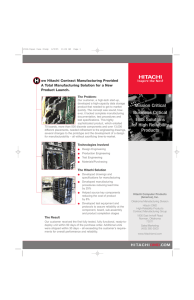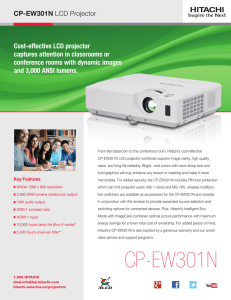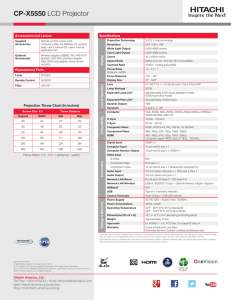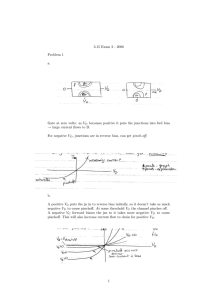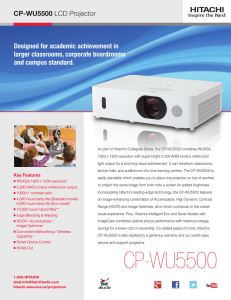Lamp Technology Facts Solid state illumination may be the future of
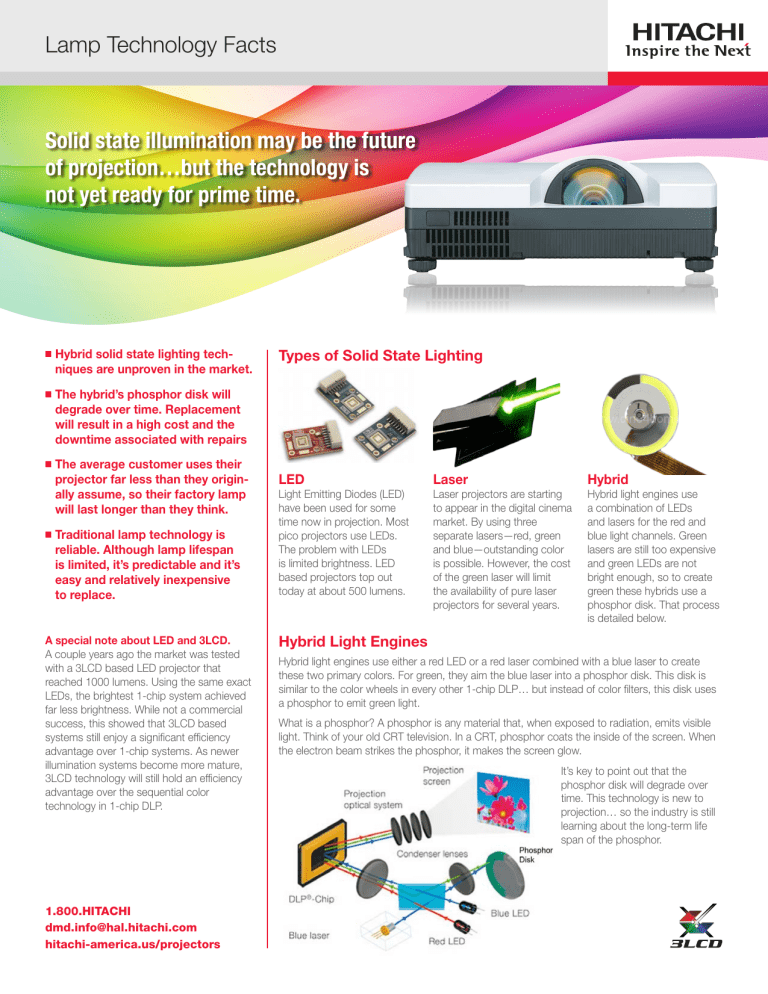
Lamp Technology Facts
Solid state illumination may be the future of projection…but the technology is not yet ready for prime time.
■
Hybrid solid state lighting techniques are unproven in the market.
■
The hybrid’s phosphor disk will degrade over time. Replacement will result in a high cost and the downtime associated with repairs
■
The average customer uses their projector far less than they origin- ally assume, so their factory lamp will last longer than they think.
■
Traditional lamp technology is reliable. Although lamp lifespan is limited, it’s predictable and it’s easy and relatively inexpensive to replace.
A special note about LED and 3LCD.
A couple years ago the market was tested with a 3LCD based LED projector that reached 1000 lumens. Using the same exact
LEDs, the brightest 1-chip system achieved far less brightness. While not a commercial success, this showed that 3LCD based systems still enjoy a significant efficiency advantage over 1-chip systems. As newer illumination systems become more mature,
3LCD technology will still hold an efficiency advantage over the sequential color technology in 1-chip DLP.
Types of Solid State Lighting
LED
Light Emitting Diodes (LED) have been used for some time now in projection. Most pico projectors use LEDs.
The problem with LEDs is limited brightness. LED based projectors top out today at about 500 lumens.
Laser
Laser projectors are starting to appear in the digital cinema market. By using three separate lasers—red, green and blue—outstanding color is possible. However, the cost of the green laser will limit the availability of pure laser projectors for several years.
Hybrid
Hybrid light engines use a combination of LEDs and lasers for the red and blue light channels. Green lasers are still too expensive and green LEDs are not bright enough, so to create green these hybrids use a phosphor disk. That process is detailed below.
Hybrid Light Engines
Hybrid light engines use either a red LED or a red laser combined with a blue laser to create these two primary colors. For green, they aim the blue laser into a phosphor disk. This disk is similar to the color wheels in every other 1-chip DLP… but instead of color filters, this disk uses a phosphor to emit green light.
What is a phosphor? A phosphor is any material that, when exposed to radiation, emits visible light. Think of your old CRT television. In a CRT, phosphor coats the inside of the screen. When the electron beam strikes the phosphor, it makes the screen glow.
It’s key to point out that the phosphor disk will degrade over time. This technology is new to projection… so the industry is still learning about the long-term life span of the phosphor.
1.800.HITACHI
dmd.info@hal.hitachi.com hitachi-america.us/projectors
Lamp Technology Facts
Lamp Life of 20,000+ Hours
Solid state illumination, like LED or laser, has the advantage of long life. However, we don’t really know how long the hours are. The professional buyer uses their projector an average of 33 hours per month (PMA 2011 End User Survey). 20,000 hours is over 50 years of service for the average professional. What about high hour use customers like educators? According to the Department of Education, the average school year is 180 days and the average school day is
6.7 hours. Assuming the projector is on, all but a couple hours for lunch and recess, from the time the children arrive to the ending bell that’s just about 850 hours per school year. Meaning 20,000 hours equals over 23 years . Ask yourself, as fast as technology changes, am I going to want this projector in 20+ years?
Competitive Landscape
In general, Hitachi projectors are much smaller and lighte r than competing hybrid projectors. Although the white brightness metric may be comparable, the hybrid models use 1-chip DLP sequential color technology, so once the data is available we will likely see a
Hitachi advantage in color brightness. Hitachi also enjoys a power efficiency advantage on many models. Finally, Hitachi has a sizeable price advantage even with factoring in the cost of a replacement lamp. Below is a quick comparison of a couple competitors against
Hitachi’s model CP-D31N short throw projector.
Street Price
White Brightness
Color Brightness
Max. Power
Lumens / Watt
Hitachi CP-D31N
$895
3000 lumens
3000 lumens
290 W
10.34
Competitive Laser Model
$1,899
2000 lumens
TBD
270 W
7.4
Competitive Hybrid Model
$1,849
2500 lumens
TBD
430 W
5.8
Weight
Size / Volume (cc)
3.8 kg
10393
5.1 kg
17550
When compared to the competition, Hitachi is less than half the price, has a higher efficiency, and is much lighter and smaller.
7.1 kg
14380
Lamp Technology Summary
■
LED technology is not bright enough for mainstream projection.
Buyers overwhelmingly choose projectors with more than 2,000 lumens for business and education applications.
■
Pure laser projectors show great promise. But, the cost and availability of quality green lasers will limit the availability of these systems for the next several years.
■
Hybrid lighting systems from the competition deliver the lumens, but are unproven in the market and introduce their own shortcomings.
These create green light by aiming blue laser light into a spinning phosphor disk. This phosphor disk will degrade over time.
■
Traditional lamps do have limitations but still offer several key advantages including the following:
— Lamp technology is tried and true with a 20+ year history.
— Although limited…lamp life is well understood and predictable.
— The industry is still learning how long the phosphors inside the hybrid systems will truly last.
— The price of a new lamp is still more cost effective than repairing a phosphor disk.
HI0103-09/12 WEB
All specifications subject to change without notice.
©2012 Hitachi America, Ltd. All Rights Reserved.
Hitachi America, Ltd.
900 Hitachi Way, Chula Vista, CA 91914
Toll Free: 1.800.HITACHI
•
Email: dmd.info@hal.hitachi.com
Web: hitachi-america.us/projectors
